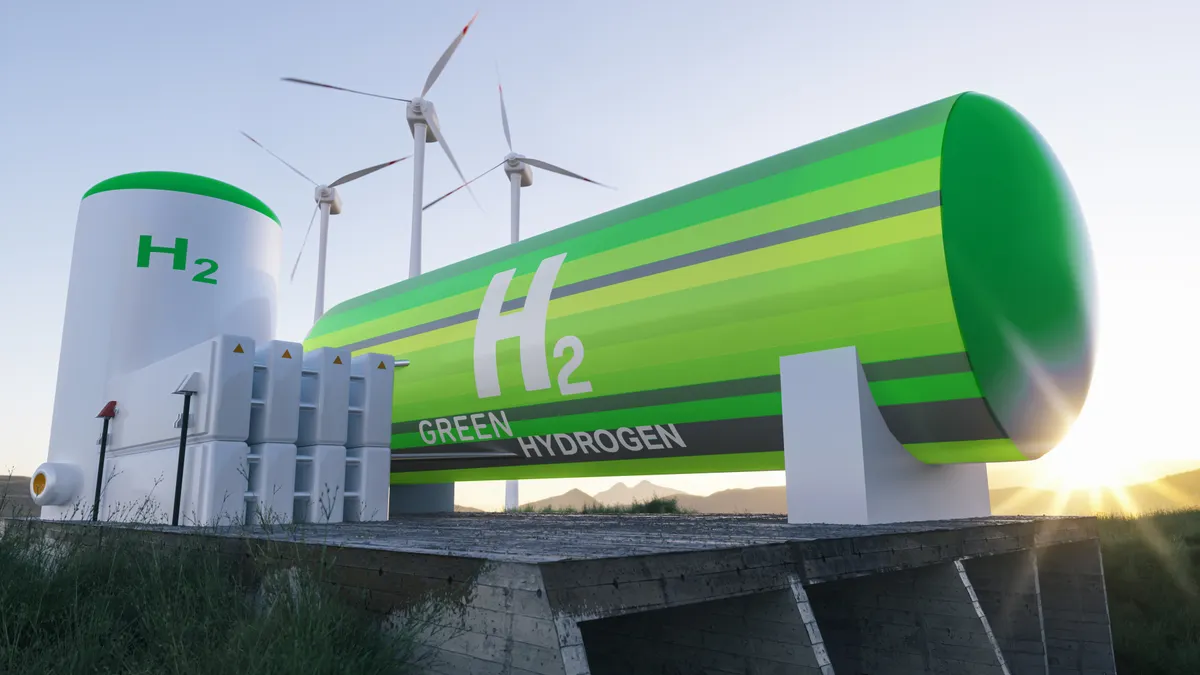Dive Brief:
-
The Colorado legislature has passed a bill that, if signed by Gov. Jared Polis, D, would create state-level tax incentives for the use of clean hydrogen.
-
To qualify for the tax credits, hydrogen producers must add new renewable energy resources to the grid and match their energy use to hourly emissions data. The hydrogen must be put to use in heavy-duty vehicles, aviation, or other hard-to-decarbonize, primarily industrial sectors.
-
The Natural Resources Defense Council praised the bill as setting an important national precedent. But the Fuel Cell and Hydrogen Association says the bill’s narrow definitions and strict standards will limit the production of hydrogen in Colorado.
Dive Insight:
With federal production tax credits now in play for clean hydrogen, state leaders are looking for ways to capture their own piece of this growing industry. But rifts have emerged regarding what kind of hydrogen production deserves incentives.
Colorado is poised to be the first state to codify a framework dubbed the “three pillars” of clean hydrogen production — additionality, temporality and geography. Under this framework, hydrogen producers who wish to receive the extra benefits of state tax credits would have to meet GHG emissions standards. To the extent that they are claiming zero emissions electricity is used in meeting these standards, starting no later than Jan. 1, 2028, they would need to certify that the energy they use to create hydrogen is 100% renewable on a 24-7, hourly basis — net zero emissions alone would not qualify. In addition, the renewable energy powering the hydrogen plant must be physically located in the same geographic region as the plant itself, and the plant must not draw on renewable energy supplies that existed more than three years before the plant’s construction.
The goal is to ensure hydrogen sold as clean is actually clean, according to Pete Budden, hydrogen advocate for the Natural Resources Defense Council’s Climate and Clean Energy Program. Clean hydrogen, also sometimes called green hydrogen, is produced by using renewable electricity to split water into its component parts — hydrogen and oxygen.
But today’s electrolyzers, Budden said, are less efficient than the refineries that make conventional hydrogen from natural gas. If the electricity demand from an electrolyzer prompts the use of natural gas power plants at any point, then the production of electrolytic hydrogen will result in more emissions than would occur if the hydrogen came from a refinery. So NRDC argues the three pillars model is necessary to ensure green hydrogen production decreases overall carbon emissions.
“The purpose of having clean hydrogen is that it is a climate technology,” said Alana Miller, NRDC’s Climate and Clean Energy Program Colorado policy director. “The reason we would have investment, and especially the reason we would have tax credits from the state or federal government, is to ensure that the technology is used in a way that is truly having an emissions benefit.”
But Frank Wolak, president and CEO of the Fuel Cell & Hydrogen Energy Association, believes that the three pillars approach could have the opposite effect — driving potential hydrogen investment to other states and making it more difficult for Colorado to meet its climate goals.
While Wolak praised state leaders for taking early steps to create state-level incentives for hydrogen, the current framework would restrict the number of would-be hydrogen developers to essentially a single use case, he said. Developers looking to co-locate electrolyzers with wind or solar projects could benefit from the state tax credits. But if a fertilizer manufacturer wanted to invest in electrolyzers to make clean hydrogen on-site for their own use, they might not qualify. The factory would have to be located near a new but not-yet built renewable energy project, or they would have to build one themselves.
“I think Colorado took a noble step of saying we would like to attract some additional activity,” Wolak said. “But the law’s very narrow constraints mean there are many people who want to be captured in the net of attraction to Colorado, but it’s not going to apply.”
Clarification: We have updated this story to clarify that the provisions of the bill only apply to hydrogen producers who want to receive state tax credits and rules adopted pursuant to the bill will go into effect no later than Jan. 1, 2028.













